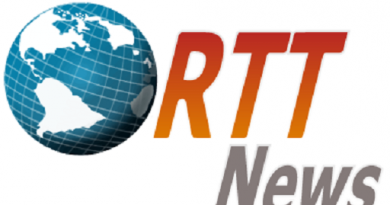Retail sales dropped 1.3 percent in May, but services rose
More On:
consumer spending
Macy’s profits rebound thanks to stimulus spending
Retail spending unchanged in April — even as more businesses reopened
Dow crosses 34,000 mark as stocks head to new record highs
Spring fashions are selling again, but full recovery may take years
US retail sales dropped more than expected in May, with spending rotating back to services from goods as vaccinations allow Americans to travel and engage in other activities that had been restricted by the COVID-19 pandemic.
“Activity decelerated likely on a shift from goods spending to services,” said Rubeela Farooqi, chief US economist at High Frequency Economics in White Plains, NY. “Despite the slowdown, sales are rising at a strong pace in the second quarter.”
Retail sales fell 1.3 percent last month, the Commerce Department said. Data for April was revised higher to show sales increasing 0.9 percent instead of being unchanged as previously reported. Economists polled by Reuters had forecast retail sales declining 0.8 percent. Retail sales surged 28.1 percent on a year-on-year basis.
During the pandemic, demand shifted to goods like electronics and motor vehicles as millions of people worked from home, switched to online classes and avoided public transportation.
More than half of eligible Americans have been fully vaccinated, boosting demand for air travel, hotel accommodation, dining out and entertainment among other activities.
Restaurants and bars are the only services category included in the retail sales report. May’s decline in retail sales was also due to a drop in receipts at auto dealerships. This reflected tight motor vehicle supply as a global semiconductor shortage hampers motor vehicle production.
Receipts at auto dealerships fell 3.7 percent. Sales at electronics and appliance stores dropped 3.4 percent, while receipts at furniture stores fell 2.1 percent. There were also decreases in sales at sporting goods, hobby, musical instrument and book stores.
Sales at building material stores tumbled 5.9 percent. Online retail sales slipped 0.8 percent. Sales at clothing stores rose 3 percent.
Consumers also increased spending at restaurants and bars, leading to a 1.8 percent rise in receipts. Sales at restaurants and bars are 70.6 percent higher compared to May 2020.
Excluding automobiles, gasoline, building materials and food services, retail sales fell 0.7 percent last month after a revised 0.4 percent decrease in April. These so-called core retail sales correspond most closely with the consumer spending component of gross domestic product.
They were previously estimated to have dropped 1.5 percent in April. Retail sales account for the goods component of consumer spending, with services such as healthcare, education, travel and hotel accommodation making up the other portion.
US stock futures pared gains after the data. The dollar rose against a basket of currencies. US Treasury prices fell.
Goods account for about 41 percent of consumer spending, with services making up the rest. As such, consumer spending likely remained robust in the second quarter, powering economic growth.
Though the boost from stimulus checks is fading, consumers have amassed at least $2.3 trillion in excess savings during the pandemic, which is expected to drive spending this year and beyond.
Consumer spending, which accounts for more than two-thirds of US economic activity, grew at an 11.3 percent annualized rate in the first quarter. Another quarter of strong growth is anticipated, and most economists are forecasting double-digit GDP growth in the second quarter.
“The big upward revisions to the April data mean we are still penciling in a 10 percent annualized rise in consumption in the second quarter,” said Michael Pearce, a senior US economist at Capital Economics in New York.
But the robust demand is outpacing supply, stoking inflation. In a separate report on Tuesday, the Labor Department said its producer price index for final demand increased 0.8 percent last month after rising 0.6 percent in April. In the 12 months through May, the PPI accelerated 6.6 percent. That was the largest gain since November 2010 and followed a 6.2% advance in April.
Economists had forecast the PPI rising 0.6 percent in May and increasing 6.3 percent on a year-on-year basis.
The report followed news last week that consumer prices rose solidly in May, leading to the biggest annual increase in inflation in nearly 13 years.
Federal Reserve Chair Jerome Powell has repeatedly stated that higher inflation will be transitory, an assertion supported by most economists. The jump in inflation is largely attributed to the reopening of the economy, leading prices to rise back to normal levels in areas hardest hit by the virus, as well as the dropping of last spring’s weak readings from the calculation.
US central bank officials started a two-day policy meeting on Tuesday. The Fed is expected to keep its overnight benchmark interest rate near zero. It is pumping money into the economy through bond purchases. Economists will, however, be keen to see if the Fed opens discussion about when and how it will withdraw some of the support to the economy.
“We expect Chair Powell will indicate that the Committee talked about tapering but that it believes the economy is still far from meeting the ‘substantial further progress’ test to actually begin tapering,” said Michael Feroli, chief US economist at JPMorgan in New York.
Share this article:
Source: Read Full Article






